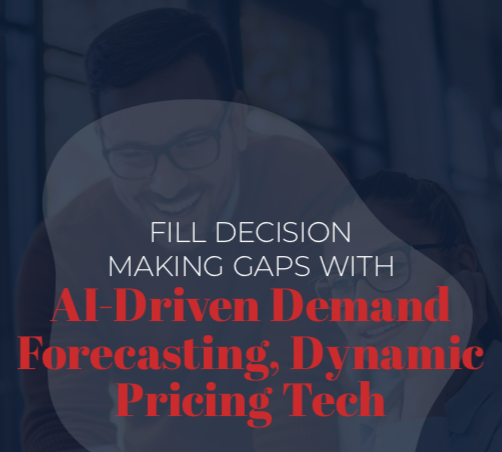AI Demand Planning for Retail
Today’s businesses survive depending on how effectively they can sense and react to situations in a dynamic and unpredictable world. Influences from geopolitical issues, weather and diseases to rapidly changing customer expectations will require businesses to make decisions at the edge.
Traditional approaches to retailing, which includes forward-looking multi-seasonal planning, merchandising, sourcing and supply-chain decisions, are strangling retail companies. The proof is in the spate of recent bankruptcies. All of these organizations had one common factor — a complete mismatch between demand and supply.
Business models, when examined granularly, are made of two elements: data and decisions. Data, the new oil, is now abundant and getting richer by the minute; and in turn, decisions need to be made rapidly at the edge of the organization — where demand meets supply. The key to leveraging Artificial Intelligence in your business is to understand that machines can crunch enormous amounts of data, find patterns and trends in that data, provide scenarios to key decision makers in the value chain, and make those decisions when they need to be made in a split second. Using AI, businesses can move all critical decisions including Capital Budgeting, Merchandising, Sourcing, Supply Chain, Allocation and Fulfillment closer to the market and closer to the season, and design multiple levels of supply chain to suggest mitigation strategies, deciding how — and where — to fulfill a customer request from.

Chandra Subramanian
Supply Chain Optimization Expert
Business and Technology leader with over 25 years’ experience in providing strategic, transformative and innovative solutions to firms globally. Extensive experience in the software marketplace with specific focus on supply chain network design. Chandra has worked in Europe, APAC and the US and gained International management experience involving cross-cultural, cross-functional matrix organizations.
VIDEOS


WHITEPAPERS
Forecasting in An Uncertain World
The integration of sales and fulfillment processes accelerated by post-pandemic shift to ecommerce and omni-channel retailing amplified the disconnect between digital and physical worlds in retail supply chains. SKU proliferation, seasonal variations, multiple fulfillment channels, customer preferences and supply-chain risks add incredible complexities in balancing supply and demand for products and all related services and activities. Incorrect demand forecast can cause a bullwhip effect throughout the organization resulting in supply chain inefficiencies and reduced profitability. A high-fidelity demand forecast connected with operational planning is therefore of paramount importance in reducing the bullwhip effect.
Making Sense of Chaos
Demand uncertainty leads to challenges in inventory allocation and fulfillment and is an important factor to be considered in designing your supply chain operations. A common way of hedging against demand uncertainty is to use safety stock levels at various locations in the supply chain. Historical methods of estimating safety stock levels based on traditional inventory theory do not provide an effective methodology in todays dynamic environment in which customers could buy from any channel and receive the product at any location.
AI-Driven Demand Forecasting
Retailers invested nearly $5.9 billion in 2019 on AI and machine learning-powered solutions, according to IDC, seeking to improve an array of operations across their businesses. These tools’ ability to dig through large amounts of data quickly and efficiently give them useful roles in decision making at the corporate level, and they also can detect warning signs at stores and on web sites before potential problems affect the customer experience.
Retailers that take full advantage of these solutions will find both internal and customer-facing applications.
Omni-Channel AutoBrokering
BAGA (“Buy Anywhere Get Anywhere”)™ uses Artificial Intelligence (AI) , Machine Learning (ML) and BigData to ensure product fulfillment. The solution uses sophisticated algorithms to optimally balance out multiple variables and constraints to ensure fulfilment while maximizing margins. Whenever a customer wishes to buy an article not immediately available at their channel of choice (brick & mortar and online), BAGA™ finds the item at nearby stores or distribution centers and automatically initiates order fulfilment to reduce “lost sales”.
BLOG POSTS





